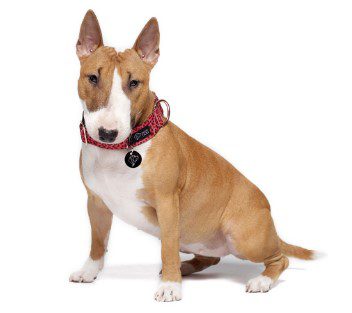

Neoprene allergy is an allergic reaction to the synthetic material neoprene, which is often found in dog collars, toys, and bedding. Symptoms of neoprene allergy in dogs include itching and scratching, red or inflamed skin, patchy fur loss, sores and scabs, and recurrent skin infections. Other signs may include sneezing, coughing, and problems with digestion.
Neoprene allergy in dogs is caused by an immune system reaction to the synthetic material called neoprene. Neoprene is often found in pet products such as dog collars, toys, and bedding. When the dog’s immune system is exposed to neoprene, it overreacts and overproduces antibodies, leading to the allergic symptoms.
Diagnosis of neoprene allergy affecting dogs is typically done by physical examination and a few diagnostic tests, such as skin scrapings and skin cytology. Allergic blood tests can also be performed to determine if the allergy is related to the presence of neoprene. Once the type of allergy is identified, the veterinarian can recommend treatment such as topical ointments, antihistamines, steroids, or dietary modifications. Further steps may include removing the source of the allergens from the environment or providing the dog with allergy desensitization shots.
Neoprene allergy can range from mild to severe depending on the amount of exposure the pet has to the allergen and how much neoprene they are allergic to. While neoprene allergy is not life-threatening, it can cause severe irritation and discomfort that may require veterinary treatment. Left untreated, the condition can lead to other, more serious problems, such as chronic skin infections, which may lead to a decrease in quality of life. Fortunately, the mortality rate for neoprene allergy is low, as it is easily treatable with a combination of allergen avoidance, medication, and regular veterinary care.
Treatment for neoprene allergy in dogs involves taking steps to identify and remove sources of neoprene from the dog’s environment. This could include changing their collar,bedding, and toys to products that don’t contain neoprene or any other synthetic materials. A veterinarian may prescribe antihistamines to reduce itching and swelling. In severe cases, where recurrent infections are present, antibiotics may be necessary.
Prevention methods for neoprene allergy in dogs include avoiding items that contain neoprene, such as collars, toys, and bedding; choosing products made from neoprene-free materials; providing clean and dry living areas; and regularly bathing and grooming the dog. Proper nutrition and regular veterinary check-ups can also help to reduce risk factors for allergies.
Neoprene allergy is not contagious and only affects dogs. It cannot be spread to humans.
Home remedies that can be helpful in managing neoprene allergy include keeping the allergen out of the dog’s environment, giving the dog a cool bath with hypoallergenic shampoo, and applying a moisturizing ointment to the affected area.
Although these dog allergy remedies can be useful in fighting neoprene allergy, it is important to have a veterinarian assess the problem. The best way to manage allergies in dogs is to get professional help and find the most suitable solutions.
Common dog breeds that are vulnerable to a Neoprene allergy include English Bulldogs, German Shepherds, Chihuahuas, Dachshunds, and Maltese. Neoprene allergy is caused when dogs are exposed to neoprene, typically due to its presence in rubber, plastic, and various pet toys. Symptoms of the allergy can range from itchy skin, rashes, and skin irritation to more serious problems such as digestive issues, difficulty breathing, anaphylactic shock, and swollen joints. To avoid an allergic reaction, owners should switch out any neoprene-based pet toys with an alternative, such as natural fiber toys.
Have you ever experienced neoprene allergy with your dog? How did they respond and how did you manage the situation? It can be a difficult process to identify the allergy and figure out how to best respond, but it’s important to prioritize your dog’s health and comfort. We hope that your pet has been able to find relief from this allergy and that you both feel more at ease. Wishing you and your pup the best!